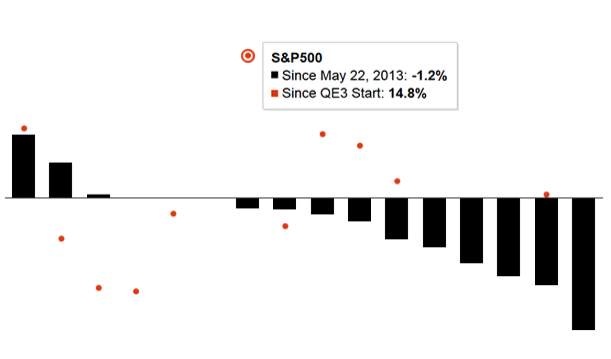Quantitative Easing: This Is How Interpretations Of Bernanke's Speeches Are Changing How Different Asset Classes Perform

Quantitative easing, or the Federal Reserve’s strategy of buying up U.S. Treasury bonds and mortgage-backed securities to drive down long-term interest rates, makes it relatively inexpensive to borrow, especially for banks, institutions and private companies.
And when interest rates are low, investors tend to invest more in equities and other financial assets that are relatively high risk, high reward.
On Sept. 13, 2012, the Federal Reserve announced the start of a third round of quantitative easing. On May 22, 2013, Ben Bernanke, the chairman of the Federal Reserve, made a speech to Congress that was widely interpreted as hinting that interest rates would rise.
Even though high-risk, high-reward assets have performed well since QE3 was announced, since Bernanke’s speech in May such assets have started to experience headwinds.
On the other hand, low-risk, low-return assets have behaved in the exact opposite manner.
Interestingly, U.S. Treasury bonds, which are usually considered to be one of the safest assets one can hold, have also been experiencing headwinds. This could be because Treasury bonds will be the first to be affected when the Federal Reserve changes monetary policy and exits its current QE strategy.
This makes existing, low-return U.S. Treasury bonds, whose prices move in the opposite direction from interest rates, appear unattractive, as investors expect interest rates to rise in the future.
In his Thursday news conference Bernanke commented on how the economy is in much better shape than it was last year. Yet he gave no indication that the Federal Reserve will change monetary policy to exit QE. Check out the live blog of this presser here. Here is an interactive chart that compares how different assets have performed in the time since the start of QE, and since Bernanke’s speech on May 22. Hover over any bar or point for more info:
© Copyright IBTimes 2024. All rights reserved.





















